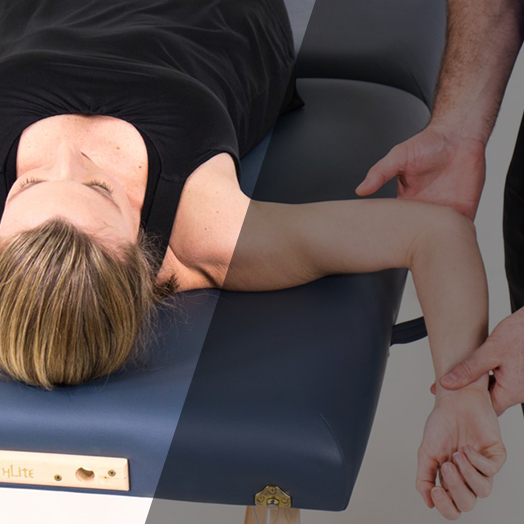Survival of the Fittest Part I
Written by Robert "Skip" George, DC, CCSP, CSCS SFMA
Dr. Robert "Skip" George is a Chiropractor who owns and operates Optimum Fitness and Health in La Jolla, CA. He is a chiropractor who specializes in rehabilitation and performance conditioning. He has a unique way of integrating the FMS into his practice. Below is the first article in a 3-Part series, this article serves to summarize the FMS and how the underlying philosophy can be utilized in a clinical setting. This series will discuss how he utilizes the Functional Movement System and as a Chiropractor how it has become an integral part of his exercise and treatment philosophy.
Survival of Fittest: Integrating Chiropractic, Rehabilitation, and Sports Performance Training
Part 1: Move Well and Move Often: Introduction to The Functional Movement Screen
By Robert "Skip" George, DC, CCSP, CSCS
As chiropractors, we diagnose and treat conditions of the spine and extremities. In addition, many chiropractors refer to themselves as sports or rehabilitation specialists. The chiropractic diplomate programs for sports and rehabilitation take comprehensive steps into integrating rehabilitation, sports performance training and “on the field” first aid/ injury management to provide a specialized approach for our patients and athletes.
When an injury occurs, the focus of our attention is on the region of pain. It then needs to shift and expand into seeing that pain can also be a messenger or signal not related to the location of symptoms. Gray Cook mentions that the potential exists to become myopic on one body part as being the problem versus thinking in terms of movement patterns for the entire body and prescribing specific corrective exercises or treatment that address a significant dysfunction. He also states that movement, especially moving well and often, is at the heart of not only our early growth and development but remains a central issue throughout our lives. This is true especially for aging athletes and patients.
In rehabilitation, sports medicine and sports performance training much is talked about "functional" and "core" training. Often the "What comes first: The chicken or the egg?" question arises when defining the topic of functional/core training and how it relates to determining what is a priority, mobility or stability. One of the most valuable tools in addressing this question and assessing "weak links" in the kinetic chain is the Functional Movement Screen developed by Gray Cook, MSPT and Lee Burton, PhD. The Functional Movement Screen, or FMS, grades seven different movement patterns to assess mobility, stability, balance, symmetry and proper movement sequence or patterns.
One way to look at how we function and perform is to visualize a three layered pyramid that separates first function, then strength/power performance, and finally sport specific skills. Think of the rectangular base of a pyramid that defines how well the patient's or athlete's body functions in terms of mobility, stability, balance, symmetry and movement sequence. This base is the widest part of the pyramid and upon what all else is built . In the middle is a layer of strength and power performance and on top of the pyramid are specific sports performance skills. Many a gifted athlete has had a season or career cut short because of durability problems that may have been addressed if their functional base was assessed, corrected, reinforced and maintained.
Often fitness is "piled" onto dysfunction without addressing the functional base of the athlete's "pyramid". This is where potential trouble begins and is a reason patients enter our offices. Many talented athletes can perform at a high level because they are such good compensators. However, they are an injury or accident ready to happen because they are working around a pre-existing problem and simply are not aware or neglect to train their functional weaknesses before beginning their strength and conditioning programs. As Gray Cook says in his book Movement: Functional Movement Systems, "Movement is how we survive, communicate, recreate and thrive." The performance pyramid applies to us all if we are to function well not only in sports but for our daily activities.
For doctors, therapists and trainers that work with sports teams, the FMS can be part of the pre-participation assessment and used as a baseline with re-checks during the season. The following tests are brief descriptions of the Functional Movement Screen. The screen takes about 10 minutes to perform and is easily integrated into your treatment schedule with your patients.
The seven tests of the FMS are graded 0-3 with a total score of 21 possible. If during any of the movements there is pain, ”0” is the score and that particular issue is addressed with appropriate treatment modalities after the entire screen is performed. If one of the tests is performed perfectly, it is graded a “3”. A score of “2” is given if the movement is done “well enough” or with minimal compensation. And, a score of “1” is given if the patient or athlete is unable to either get into position to do the test or unable to perform adequately. A minimum of “2” points for each of the seven tests for a total score of 14 is used as a as the baseline to participate in strength training or athletics. A score under 14 increases probability of injury and decreased performance.
The first screen is the Deep Overhead Squat Movement Pattern. It demonstrates fully coordinated ankle, hip and thoracic spine mobility and core stability with the hips and shoulders functioning in symmetrical positions. By the way, this test is critical especially for your golfers!
The second screen is the Hurdle Step Movement Pattern Test. It is designed to challenge the body's proper stepping and stride mechanics as well as stability and control in single leg stance. This is really helpful in determining symmetry left and right side while assessing hip mobility and balance. This test also determines how well we can stabilize during acceleration.
The third screen is the In-Line Lunge Movement Pattern Test. This provides a quick appraisal of left and right function in a basic pattern and is intended to place the body in a position that will focus on the stresses as simulated during rotation, deceleration and lateral type movements. This one is done balancing on a 2 x 6 inch board with feet in line and maintaining perfect posture. This test also demonstrates how well and athlete stabilizes during deceleration.
The fourth screen is a Shoulder Mobility "Reaching" Movement Pattern Test. This test demonstrates the natural complimentary rhythm of the scapular-thoracic region, thoracic spine and rib cage with reciprocal upper extremity shoulder movements. In other words, you are really testing thoracic spine mobility in addition to gleno-humeral movement and scapular stability.
The fifth screen is the Active Straight Leg Raise Movement Pattern Test. This is an "apparently" simple test that has the patient supine on the ground and identifies active mobility of the flexed hip and initial and continuous core stability while the opposite hip remains extended and flat on the ground. Don't be fooled by the simplicity of this test as it also demonstrates the ability to disassociate the lower extremities while maintaining stability in the pelvis and core.
The six screen is the Trunk Stability Push-Up Movement Pattern Test. It is used as a basic observation of reflex core stabilization and is not used as a measure of strength since only one repetition is required. The goal is to initiate movement with the upper extremity without allowing movement of the hips or pelvis.
The seventh and last screen is the Rotary Stability Movement Pattern Test and it is a complex movement requiring proper neuromuscular coordination and energy transfer from one segment of the body to another through the torso. It has roots in the basic creeping pattern that follows the crawling pattern in the developmental sequence of normal human growth and locomotion. It looks like a birddog, horse stance or whatever you want to call getting on all fours!
The purpose of the FMS is to find the weak links in your patients and alleviate them with specific corrective exercise strategies. When this occurs, the individual or athlete will have greater movement efficiency which will lead to improved performance and a decrease in injury potential.
The Functional Movement Screen is designed for the individual that is not in pain or has an obvious injury. The Functional Movement Screen can be easily integrated for all patients to provide a continuum of care and rational reason to continue with treatment even when pain or injury has resolved.
The Functional Movement Screen has been shown to predict and reduce the likelihood of injury. This has been tested in the NFL and the FMS is now part of the NFL Combine. The United States Marine Corps utilizes the FMS for specialized communities within that branch. It is also used in several college football programs and with many professional golfers. Titleist Performance Institute uses the FMS to assess golfers and their unique movement dysfunctions. It is taught as part of the Titleist Certified Provider program that many chiropractors and therapists have participated in.
The Selective Functional Movement Assessment (SFMA) is a different and complimentary screen designed for the patient that has pain and requires a more in-depth treatment protocol. The "SFMA" will be described in a future article of Survival of the Fittest: Integrating Chiropractic, Rehabilitation and Sports Performance Training.
Robert "Skip" George, DC, CCSP, CSCS co-owns Optimum Fitness and Health in La Jolla, CA. and integrates chiropractic, rehabilitation, and sports performance training in his practice. He can be reached at Dr.George@SBCglobal.net
References:
1.The Functional Movement Screen Professional Training Manual by Gray Cook, MSPT, OCS, CSCS, Lee Burton, PhD, ATC, CSCS and Keith Fields, MS.
2.MOVEMENT: Functional Movement Systems, Gray Cook, MSPT, OCS, CSCS, with Dr. Lee Burton, Dr. Kyle Kiesel, Dr. Greg Rose, and Milo F. Bryant





